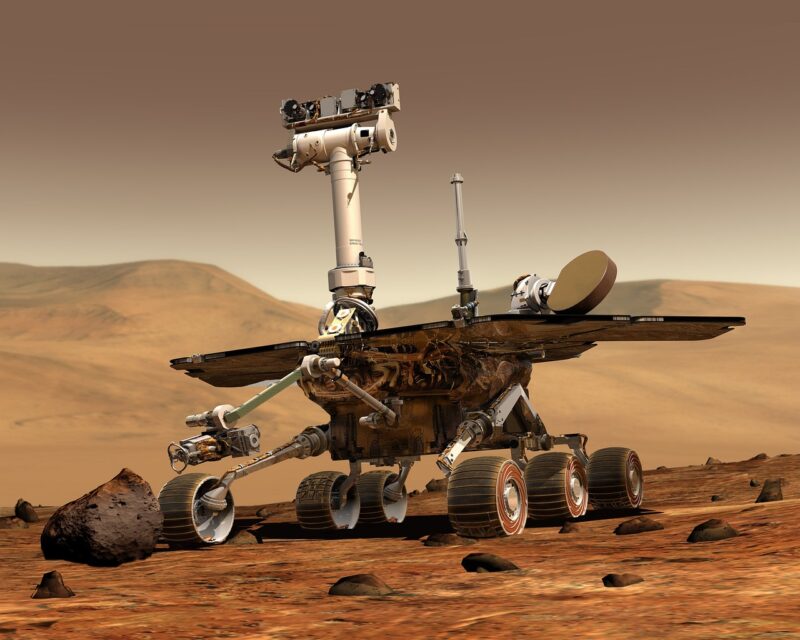Exploring the Boundaries of the Universe: How Far Can We Go with Space Exploration?
November 14, 2024

The vastness of the universe has fascinated humanity for centuries, sparking imaginations and igniting the desire for exploration beyond the confines of our earthly existence. Each star in the night sky, each distant galaxy beckons us to uncover mysteries that lie beyond the horizon of our known world. Space exploration not only expands our understanding of the cosmos but also serves as a testament to human ingenuity, perseverance, and the relentless pursuit of knowledge.
1. A Brief History of Space Exploration
The journey of space exploration began in the mid-20th century as nations raced to uncover the secrets of the universe. The launch of Sputnik 1 by the Soviet Union on October 4, 1957, marked the beginning of the space age and set the stage for further advancements. This first artificial satellite demonstrated both the technological capability and the geopolitical implications of space exploration.
In 1961, Yuri Gagarin became the first human to journey into space, and just eight years later, NASA’s Apollo 11 mission successfully landed astronauts Neil Armstrong and Buzz Aldrin on the lunar surface. These milestones ignited an era of profound discovery, prompting research into not only our own moon but also subsequent missions to Mars, Venus, and the outer planets.
> The great leap into space heralded a new chapter in human history, inspiring generations to dream of reaching beyond our planet.
2. The Expanding Arsenal of Space Exploration Technologies
As we venture deeper into the cosmos, the technologies that enable space exploration continue to evolve. From powerful rockets to sophisticated spacecraft, the tools of exploration have undergone remarkable advancements:
- Rockets: Modern rockets, such as SpaceX’s Falcon 9 and NASA’s Space Launch System (SLS), offer enhanced capabilities for launching payloads into orbit and beyond. These innovations reduce costs and increase the frequency of missions, dramatically changing the accessibility of space.
- Robotic Probes: Uncrewed spacecraft like Voyager 1 and 2 have traveled beyond the outer planets, revealing previously unknown information about our solar system. They have now entered interstellar space, providing insights into the boundaries of the solar system and beyond.
- Landers and Rovers: Rovers such as NASA’s Perseverance and China’s Zhurong have explored the Martian surface, analyzing soil and searching for evidence of past life. These autonomous machines function in extreme environments and send back a wealth of data.
- Space Telescopes: Instruments like the Hubble Space Telescope have reshaped our understanding of the universe, capturing stunning images and providing key data on distant galaxies, exoplanets, and cosmic phenomena.
As we harness advancements in artificial intelligence (AI) and machine learning, future exploration promises even greater leaps forward in data analysis and navigation protocols.
3. How Far Can We Go? Understanding the Limitations of Space Exploration
While our ability to explore space has grown significantly, several intrinsic limitations continue to challenge our ambitions:
- Distance: The nearest star system, Alpha Centauri, lies about 4.37 light-years away, or roughly 25 trillion miles. Current propulsion technologies mean that reaching even the closest stars would take thousands of years. This raises questions about the long-term sustainability of deep space missions and the feasibility of human exploration of other star systems.
- Radiation Exposure: Space is filled with cosmic radiation, which poses a significant risk to astronauts on long-duration missions. Effective shielding will be necessary to protect human crews from the harmful effects of radiation during journeys to Mars or beyond.
- Life Support Systems: Ensuring adequate life support, including air, food, and water for extended missions poses engineering challenges. Innovations in sustainable life support systems will be crucial for missions of long duration.
- Psychological Challenges: The isolation and confinement of long-term space travel can pose psychological challenges for crew members. Understanding and mitigating these issues are vital for any future crewed missions to Mars or farther.
The pursuit of interstellar travel remains poised on the precipice of science fiction and scientific inquiry. Yet, the pursuit of knowledge drives us to explore beyond the stars, despite the challenges.
4. The Role of International Collaboration in Space Exploration
Space exploration is increasingly seen as a global endeavor. Collaborations between nations have allowed massive projects to flourish, uniting the talents and resources of different countries:
- International Space Station (ISS): A prime example of collaboration, the ISS involves key partners including NASA, ESA, Roscosmos, JAXA, and CSA. The ISS serves as a microgravity research facility where scientists can conduct experiments and test technologies for future exploration beyond low Earth orbit.
- Joint Missions: Collaborative missions, such as the Mars Sample Return mission involving NASA and ESA, leverage shared expertise and resources, reducing the costs and risks associated with exploration.
- Fostering Global Interest: By encouraging international partnerships, space agencies can inspire a broader interest in STEM fields, driving education and innovation in multiple countries.
As we unite efforts in space exploration, the cumulative knowledge and resources could lead to breakthroughs that push the boundaries of human capability.
5. Looking Ahead: The Future of Space Exploration
The path ahead in space exploration is paved with exciting potential and challenges. As we look beyond Mars, missions to the moons of Jupiter and Saturn, such as Europa and Enceladus, tantalize researchers with the prospect of discovering extraterrestrial life. Future telescopes may allow us to identify Earth-like exoplanets in habitable zones around distant stars, expanding the search for life beyond our solar system.
Advancements in propulsion technology, such as ion engines and solar sails, may one day enable us to approach the concept of faster-than-light travel. While purely theoretical at this point, innovations in propulsion could transform our ability to reach distant celestial bodies within a human lifetime.
Moreover, private companies like SpaceX are leading a new era of space exploration, seeking to reduce launch costs and increase access to space. The Starship program aims to take humanity to the Moon and Mars, pushing the boundaries of what is possible.
Conclusion
Humanity’s thirst for knowledge and exploration drives us to peer into the cosmos and search for our place within it. Despite the staggering challenges that lie ahead, our efforts in space exploration stand as a testament to human ingenuity and resilience.
As we prepare for voyages that may take us farther than we ever thought possible, we discover not only new worlds but also expand our understanding of ourselves and our planet.
The journey of exploration continues, and while we may not know how far we can ultimately go, it is the exploration itself that enriches our existence and inspires future generations to reach for the stars.







